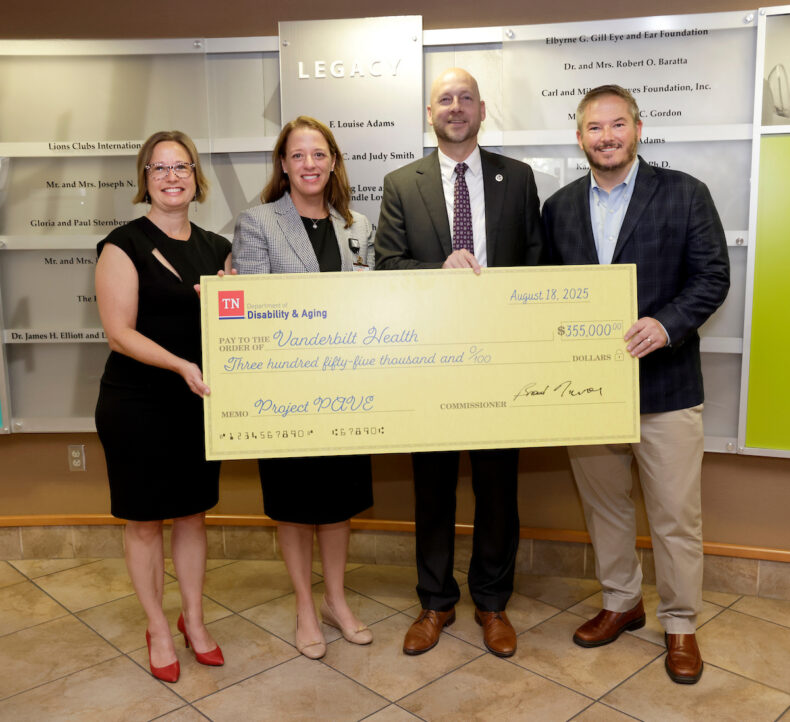
Nothing brings Brandi McRedmond a bigger smile than seeing one of her patients in tears.
It’s the telltale sign that their lives are about to change, for the better.
McRedmond, M.A., M.Ed., works as an educational consultant for the PAVE program at the Vanderbilt Eye Institute. PAVE (Providing Access to the Visual Environment) offers free clinical and educational low vision services to eligible school-age children in Tennessee.
“These kids are in the regular classrooms and are expected to function visually at the same level as a child with 20/20 vision,” said McRedmond, a certified teacher of students with visual impairments and an orientation and mobility specialist.
“Our program allows them to function on equal playing field.
“We are able to provide more flexibility for a student – they no longer have to sit up front or be singled out for additional assistance. It is incredible to see them experience that independence and realization that they can see.”
PAVE, a Vanderbilt Eye Institute grant, funded by the Tennessee Department of Education, provides clinical low vision evaluations, prescribed optical devices, instruction and follow-up as well as technical assistance for children ages 3-21.
Jeffrey Sonsino, O.D., FAAO, principal investigator of the grant, recently received word that the three-year service grant of nearly $1 million will again be renewed.
To date more than 1,000 children have been helped since the program’s beginning in 1984.
“This grant allows us to fill a critical need in the community,” said Sonsino. “The real power with this program is that we have a true multidisciplinary team made up of educational experts and eye care professionals. And we are really making an impact.”
PAVE only treats children with low vision impairment – a reduction in vision due to some kind of ocular disease, not correctable with glasses, surgery or contact lenses. Low vision is eyesight in the range of 20/70 to 20/8000.
For Kyle Bieze, 19, the PAVE intervention offered him devices that allowed him to perform better in school.
Bieze doesn’t recall when he first began attending the PAVE clinics as a young boy, but said he was given a monocular to assist him with school work.
“I still have the monocular,” said Bieze, now a sophomore at Tennessee Tech. “It was really the most useful tool as far as using it for school, especially to see the board and overhead projector images.
“Now, in college, professors use PowerPoints and TVs in classrooms. But I keep my monocular in my backpack, just in case.”
Bieze was diagnosed with a hereditary visual disorder called Achromotopsia, which is characterized by decreased vision, light sensitivity and the absence of color vision. It affects about one in every 33,000 people in the United States.
With glasses his visual acuity is 20/100. Without corrective lenses, his eyesight is at 20/400. Bieze is thankful that programs like PAVE are able to help.
Sonsino and his team evaluated 51 patients during the clinic. Two other clinics will be held at offsite locations in East Tennessee.
The multiple-day sessions require that Sonsino invite two specialists, Ana Perez, O.D., from the University of Houston and Richard Jamara, O.D., from the New England College of Optometry, to assist him with evaluations, which are different from a typical eye exam and focus more on the student’s functional use of vision, not necessarily the health of the eye.
Three teachers, led by McRedmond, work with the students, families and schools on how to use the devices prescribed by the PAVE team.
“We have had so many kids who have gone through our program, gone on to college and are now employed,” said Sonsino.
“National statistics show that kids with a visual impairment have an overall rate of unemployment of 75 percent on average. We have example after example of students who go on to lead successful careers once they have learned how to properly use optical devices for their benefit.”

















